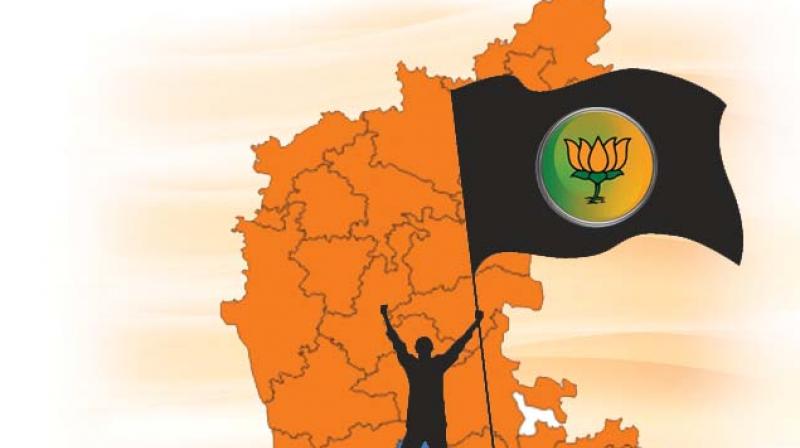When Karnataka turned deep saffron: Was it just the Modi wave?

When a wave of unprecedented proportions sweeps away everything in its path, the results could be astounding... like it happened in Karnataka in the recent Lok Sabha polls. Titans like Mallikarjun Kharge and H.D. Deve Gowda were toppled like ninepins and regions hitherto considered invincible strongholds of the ruling Congress and JD(S) turned deep saffron. This was no electoral aberration; it was a huge outpouring of support for a man many considered the only leader who could provide decisive leadership to a nation which had waited for too long for the dream republic to unfold-Narendra Modi. K.N. REDDY analyses the mind of the voter focusing on North and Central Karnataka and why caste and community affiliations failed to come to the rescue of many candidates who had always banked on them to win, regardless of their performance in office
“In the Modi era, the age old trend of candidates depending heavily upon local leaders to influence voters to go to the polling booths and cast votes in favour of candidates supported by them has become outdated. Today, there is no leader who can claim that he can make a hundred or a thousand voters vote for a particular party; it’s only Modi who has that magnetic influence on voters. The influence of Modi especially on youth cutting across caste-barriers is such that the Mathadhaara-prabhu himself voluntarily goes to the polling booth and casts his vote. Today the voter is independent and doesn’t need anybody’s goading to make him cast his vote”, commented a senior political analyst in Kalaburagi in the wake of the unprecedented support the BJP received in the state in the recent Lok Sabha polls when it won 25 of the 28 seats.
What is noteworthy in this election is that the BJP influence which was restricted to coastal and Mumbai- Karnataka regions a few years back, has now extended to the Vokkaliga dominated belt of Old Mysore and the Lingayat dominated Hyderabad Karnataka, once a strong bastion of the Congress.
In the H-K region, the BJP ’s performance has been no less than spectacular as it won all five seats- including three seats reserved for SC and STs. Its wresting of the Kalaburagi Lok Sabha seat where veteran Congress leader Mallikarjun Kharge was defeated notwithstanding the high per centage of Muslim and Dalit voters, largely considered staunch supporters of the Congress, is considered the crowning glory of the saffron party’s success in the region.
According to political observers, two major factors upset all calculations of the Congress and JD(S)- Modi`s charisma and the magnetic influence he had on youth besides the social engineering among backward communities which worked in favour of the BJP.
There is no gainsaying the fact that in today’s India where half of the 1.3 billion population is below the age of 25, youth are the leaders and opinion makers in their families.
Youth, cutting across caste and religion, except Muslims and a section of Dalits, are hugely attracted by the personality of Modi, which is a big change in society post Independence.
“Before the arrival of Modi on the political scene, youth were guided largely by elders of the family. But after Modi’s advent, there is a radical change; it’s the youth who make political decisions in the family. In some families, youth are even ready to overrule the decisions of the family head”, says a senior leader of the Congress. Ask any elder citizen and pat comes the reply, “youth won’t heed our words. Modi has become their icon”.
Retired professor R.K. Hudagi, who is actively involved in Leftist movements in the region, describes this as a “hallucinatory” effect of Modi on youth.
“ On the whole, youth cutting across caste and class barriers, barring a section of Muslims and Dalits, have gravitated towards Modi. It’s very easy to emotionalise youth and it’s a herculean task to make them think rationally”, Prof Hudagi opines.

